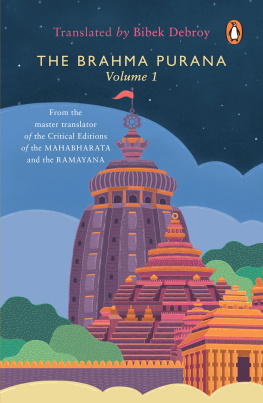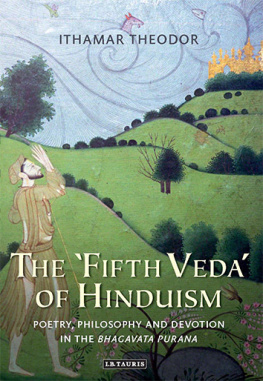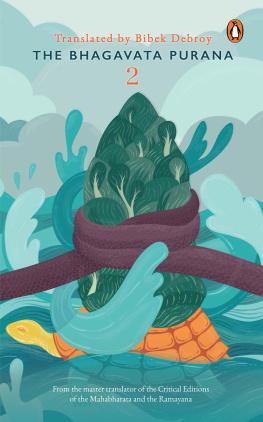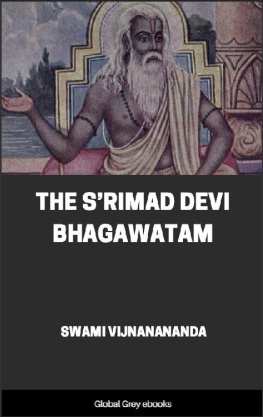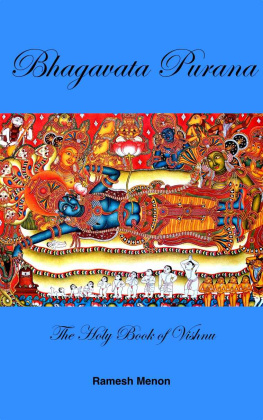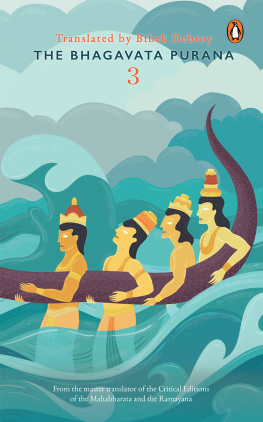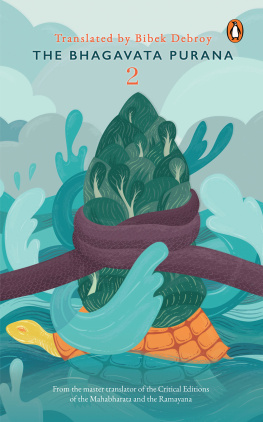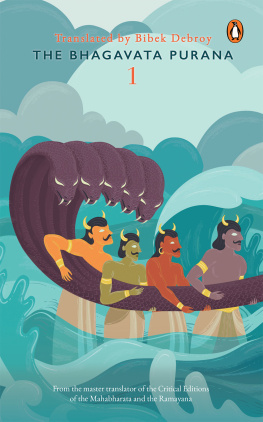Veda Vyasa - Agni Purana Part 3
Here you can read online Veda Vyasa - Agni Purana Part 3 full text of the book (entire story) in english for free. Download pdf and epub, get meaning, cover and reviews about this ebook. publisher: Kausiki, genre: Science. Description of the work, (preface) as well as reviews are available. Best literature library LitArk.com created for fans of good reading and offers a wide selection of genres:
Romance novel
Science fiction
Adventure
Detective
Science
History
Home and family
Prose
Art
Politics
Computer
Non-fiction
Religion
Business
Children
Humor
Choose a favorite category and find really read worthwhile books. Enjoy immersion in the world of imagination, feel the emotions of the characters or learn something new for yourself, make an fascinating discovery.

- Book:Agni Purana Part 3
- Author:
- Publisher:Kausiki
- Genre:
- Rating:5 / 5
- Favourites:Add to favourites
- Your mark:
- 100
- 1
- 2
- 3
- 4
- 5
Agni Purana Part 3: summary, description and annotation
We offer to read an annotation, description, summary or preface (depends on what the author of the book "Agni Purana Part 3" wrote himself). If you haven't found the necessary information about the book — write in the comments, we will try to find it.
Veda Vyasa: author's other books
Who wrote Agni Purana Part 3? Find out the surname, the name of the author of the book and a list of all author's works by series.
Agni Purana Part 3 — read online for free the complete book (whole text) full work
Below is the text of the book, divided by pages. System saving the place of the last page read, allows you to conveniently read the book "Agni Purana Part 3" online for free, without having to search again every time where you left off. Put a bookmark, and you can go to the page where you finished reading at any time.
Font size:
Interval:
Bookmark:
Agni Purana
Chapters 201 300
Digital Publishers
Kausiki
* * *
www.kausiki.com
* * *
Fire-god said:
1-6. I shall describe the navavyuharchana (worship in nine compartments) that was narrated by Hari to Narada. The letter 'a' with Vasudeva should be worshipped at the centre of a lotus figure and the letter a with Sankarsana and Pradyumna at the south, the letter a h and Aniruddha at the south-west, the letter om and Naraya n a at the west, (the words) tat sat and Brahma at the north-west, (the letter) hum and Vishnu and (the letter) ksau m and Nrusimha at the north, and the letter) bhu h and Varaha at the north-east. (The letters) kam, tam, tam, sa m and Garutmat (vehicle of Vishnu) (should be worshipped) at the western entrance (of that figure), (the letters) kham, cham, va m , hu h , phat and the eastern face at the south, (the letters) kham, tham, pham, sam and the mace at the north. (The letters) bam, nam, mam, ksaum and Ishana should be worshipped at the north-east, (the letters) dham, dam, bham, ham and Sri (Lakshmi) at the south and (the letters) gam, dam, vam, sam and Pusti. (The letters) dham, va m (should be worshipped) and the garland of wild flowers at the west of the pedestal, the srivatsa (the mark on the chest of lord Vishnu) and (the letters) sam, ham, lam at the west and (the letters) cham, tam, yam and the kaustubha (the crest-jewel) to the west of it.
7-10. (After having worshipped with) "Obeisance to Ananta", worship should be made below in the order of the ten (forms) of Vishnu and the four pitchers representing Mahendra and others in the east and other directions in the above order of the ten forms (of Vishnu). The arches and canopy (should also be worshipped in the same way). After having contemplated the orbs of fire, wind and moon with (their respective) letters in order, one should worship the body and then bathe it. One should then contemplate on the subtle form of the self in the sky, submerged in the white nectar that flows from the disc of the moon. That is the eternal seed of one's self that has becn consecrated by the flood. One should thus resolve the spirit that is being produced in the self.
11-16. Then one should do the location of twelve letters (after saying) I am verily Vishnu produced (again)". The heart, head, tuft, armour and weapons should be located (respectively) on the chest, head, tuft, back and eyes. Then the weapons should be located on the two hands. Then one would have a divine body. One should do this location on the body of the disciple in the similar way (as it has been done) on one's self as well as the deity. The worship done for Hari on the heart is known to be anirmalya (without remnant) and that done in a circle as sanirmalya (together with remnant). The disciples with their eyes covered should throw the flower (on the images) (at the commencement of the worship). On which images the flower falls that name should be given to them. Then the disciples should be seated on the left and sesamum,rice and ghee should be offered (as oblation). After having made one hundred aud eight oblations, (one should do) thousand (oblations) for the purification of the body. One should do more than hundred (oblations) for the limbs of the images of the nine compartments. After having made the final (oblation) the preceptor should initiate them (the disciples). He has to be respected by them with riches etc.
Fire-god said:
1-2. Lord Hari gets pleased with flowers, perfumes, inense, lamps and offerings. I shall describe you flowers which are fit and unfit for the god. Malati is the excellent flower. Tamala (flower) confers enjoyment and emancipation. Mallika (jasmine) destroys all sins. (The flower) yuthika gets the world of Vishnu.
3. Atimukta will also get the same fruit. The patala (flower) conveys one to the world of Vishnu. One gets the world of Vishnu with the karavira (flowers). One becomes fortunate with japa (flowers).
4. One would reach the world of Vishnu with the pavanti, kubjaka and tagara (flowers). (Onc would reach) the world of Vishnu with the karnikara. There would be destruction of sin with kuruntha.
5-6. One will have an excellent position with lotuses, ketaki and jasmine. One would reach the world of Hari with bana flowers, barbara and krishna. Similar result would be got by ashoka, tilaka and ataru s abhava. The leaves of bilva would confer liberation. One will have the supreme position with the leaves of sami.
7-11. One would reach the world of Vishnu with the bh rgaraja. One would have same fruits with the leaves of tamala. The black and white basil, white lotus, blue lotuses, lotus, red lotus are meritorious. Lord Hari (gets pleased) with a garland of hundred lotus es. One would get enjoyment and emancipation and destruction of sin with nipa, arjuna, kadamba, vakula, fragrant kimsuka, munipuspa, gokarna, nagakarsa, sandhya flower, bilva, ranjani, ketaki, kusmanda, timira, kusa, kasa, sara, dyuta etc., maruvaka leaves and other fragrant (leaves and flowers). The god would get pleased with all (that is offered) with devotion. A flower is more meritorious than a lakh of gold and a garland, more than a crore times.
12-15. It would be three times more meritorious with the forest flowers than with the flowers from one's own garden or another's garden, One should not worship lord Vishnu with withered or broken (flowers) or (flowers) having more than the usual parts. (One would reach) hell (by worshipping) with kanchandra, unmatta, girikar n ika, kutaja salmaliya and sirisa. Lord Hari (is pleased) with sugandha, brahma, lotuses and blue lotuses. Lord Hara is worshipped with arka mandara (and) dhustura flowers. ,One should not offer Kutaja, karkatt flowers and ketaki for Siva. (One should not use) kusmanda, nimba and wild flowers without fragrance in worship).
16-18. One would get enjoyment and emancipation by worshipping gods with the eight flowers of gestures such as non-violence, conquest of senses, forbearance, knowledge, compassion and learning. Non-violence is the first flower. (The second) flower is the control of senses. Compassion for the beings is (said to be) all flowers. The flower of tranquility excells. Quietitude is a flower and penance is a flower, Meditation is the seventh flower. Truth is the eighth flower. Lord Kesava is pleased with these flowers.
19-23. When lord Hari is worshipped with these flowers, he certainly gets pleased. O Excellent among men! There are other external flowers. When lord Vishnu is worshipped with devotion together with compassion, he gets pleased. Water is the flower for Varuna. Ghee, milk and curd (are the flowers) for Soma. Food etc. (are the flowers) for Prajapati (Brahma) and incense and lamp for Fire (god). The fifth flower is the fruits and flowers of the forest. The kusa, roots etc. are the flowers of the earth. Fragrant sandal is that of the Wind (god). Earnestness is the flower for lord Vishnu. These are always the eight flowers. The seat, the form, the five limbs (such as the heart etc.) and Vishnu are the eight flowers. (Worship should be made with the names) Vasudeva and others for Vishnu and Ishana and others for Siva.
Fire-god said:
1-5. I shall describe hells. One does not go to them if he worships lord Vishnu with flowers and other things. A man gets released from his life forces at the end of his life even though he does not wish for it. A man gets released from his life on account of some case such as water, fire, poison, weapon, hunger, illness and fall from a mountain. One takes another body to be experienced as a result of one's own acts. One who has committed a sin would experience grief and one who does good (deeds) would experience happiness. One is led to the God of Death by the dreadful messengers of God of Death through the southern gate if one has taken evil path. Pious men (would be taken) by the western and other (doors). (They are) cast into hells by the servants being ordered by the God of Death. On account of piety one is led to heaven according to the words of Vasistha.
Next pageFont size:
Interval:
Bookmark:
Similar books «Agni Purana Part 3»
Look at similar books to Agni Purana Part 3. We have selected literature similar in name and meaning in the hope of providing readers with more options to find new, interesting, not yet read works.
Discussion, reviews of the book Agni Purana Part 3 and just readers' own opinions. Leave your comments, write what you think about the work, its meaning or the main characters. Specify what exactly you liked and what you didn't like, and why you think so.

